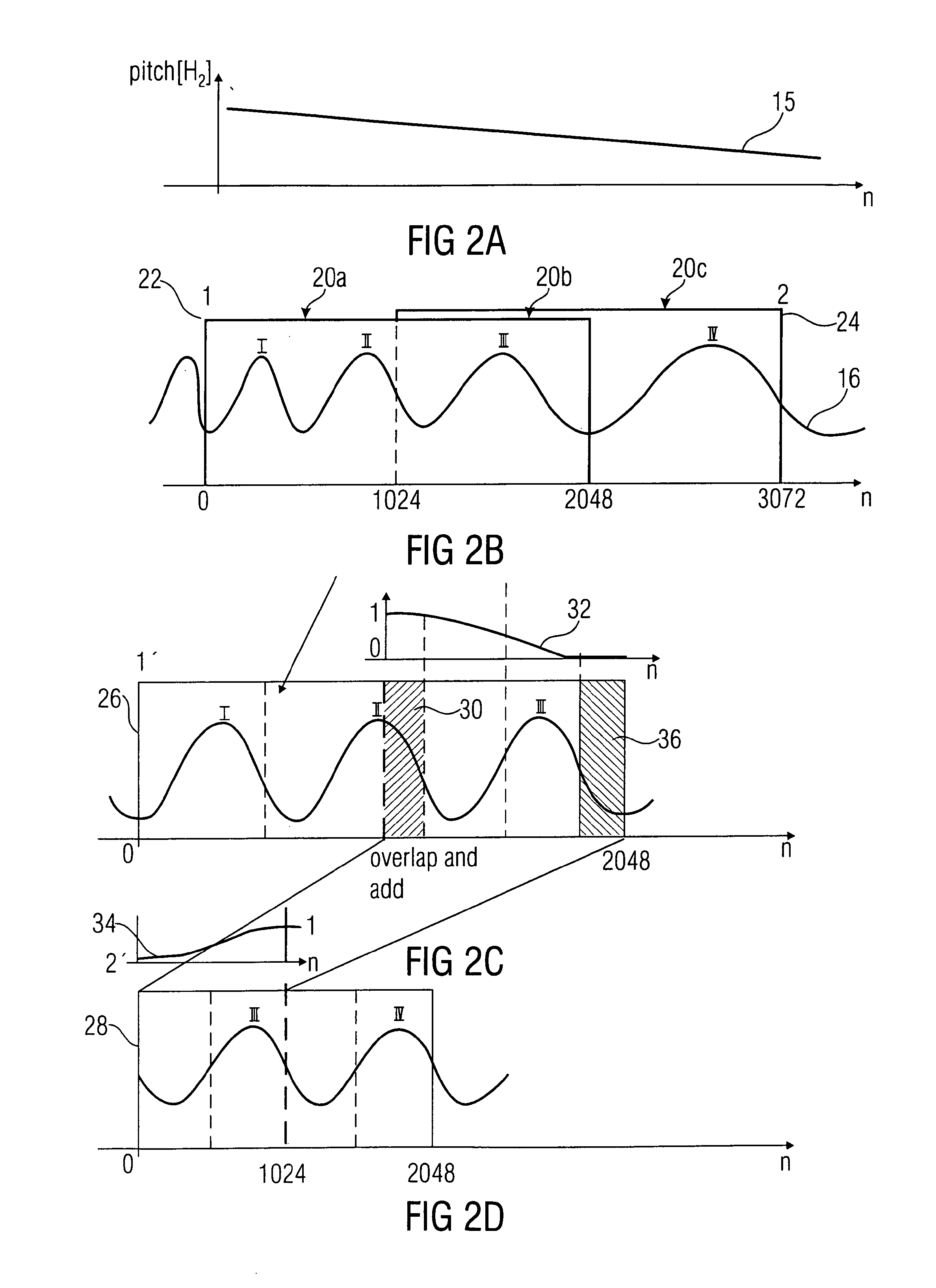Audio transform coding using pitch correction
a technology of pitch correction and audio transform, applied in the field of audio processors, can solve the problems of reducing coding efficiency, difficult synchronization, and difficult for applications with limited coding delay, and achieve the effects of reducing the transition length (samples), preserving the capability of overlap, and efficient coded
- Summary
- Abstract
- Description
- Claims
- Application Information
AI Technical Summary
Benefits of technology
Problems solved by technology
Method used
Image
Examples
Embodiment Construction
[0043]FIG. 1 shows an embodiment of an audio processor 10 (input signal) for generating a processed representation of an audio signal having a sequence of frames. The audio processor 2 comprises a sampler 4, which is adapted to sample an audio signal 10 (input signal) input in the audio processor 2 to derive the signal blocks (sampled representations) used as a basis for a frequency domain transform. The audio processor 2 further comprises a transform window calculator 6 adapted to derive scaling windows for the sampled representations output from the sampler 4. These are input into a windower 8, which is adapted to apply the scaling windows to the sampled representations derived by sampler 4. In some embodiments, the windower may additionally comprise a frequency domain transformer 8a in order to derive frequency-domain representations of the scaled sampled representations. These may then be processed or further transmitted as an encoded representation of the audio signal 10. The a...
PUM
 Login to View More
Login to View More Abstract
Description
Claims
Application Information
 Login to View More
Login to View More - R&D
- Intellectual Property
- Life Sciences
- Materials
- Tech Scout
- Unparalleled Data Quality
- Higher Quality Content
- 60% Fewer Hallucinations
Browse by: Latest US Patents, China's latest patents, Technical Efficacy Thesaurus, Application Domain, Technology Topic, Popular Technical Reports.
© 2025 PatSnap. All rights reserved.Legal|Privacy policy|Modern Slavery Act Transparency Statement|Sitemap|About US| Contact US: help@patsnap.com



